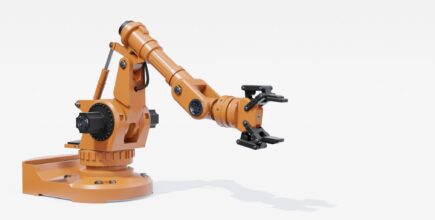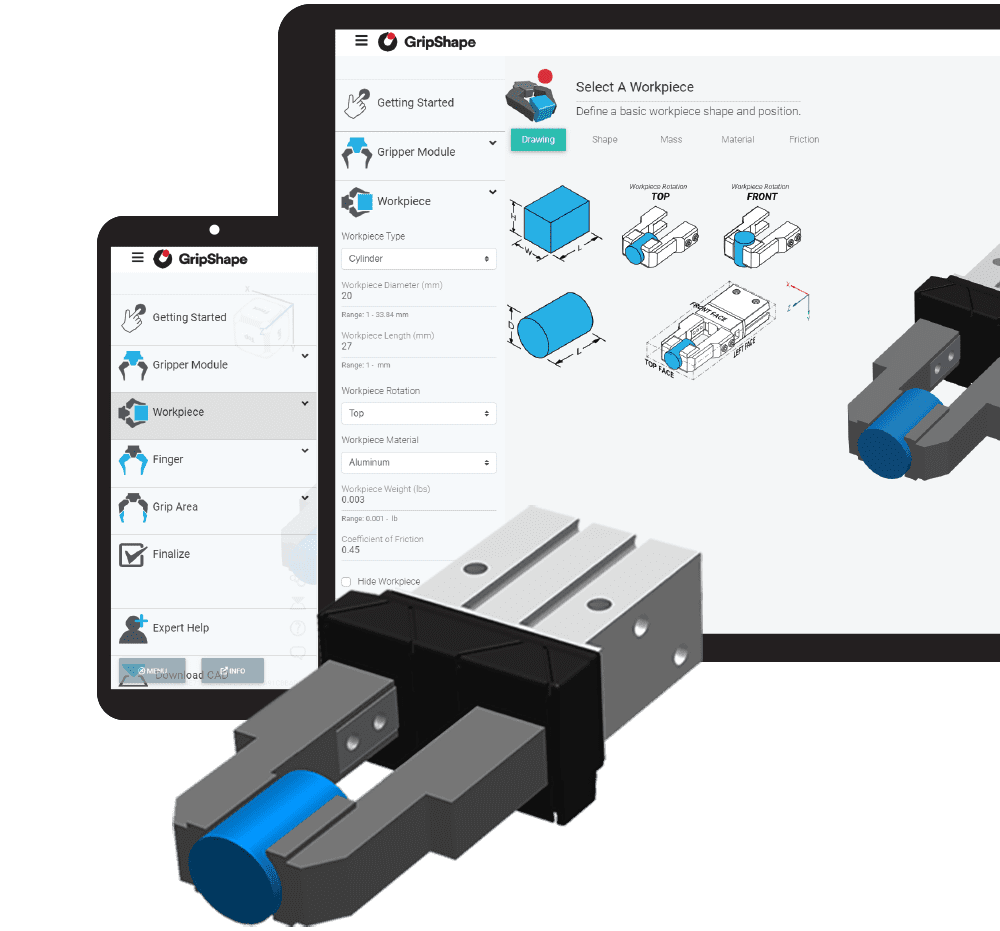How Does a Parallel Robot Gripper Work?

Are you looking for a way to save time and money in the workplace? If so, you may be interested in using a parallel gripper for your robotic application. This style of gripper module has become incredibly popular during the past few years. It is durable, versatile, and capable of performing numerous tasks efficiently. Of course, there are multiple parallel grippers available, so how can you find the right one to meet your needs? Read through the free information below and let GripShape help if you are looking for custom parallel gripper fingers.
An Overview of Parallel Grippers
First, it is essential to understand how parallel grippers work. They actuate by using a linear motion on one plane to move two or more jaws in relation to one another. An example of this style gripper is the Schunk PGN-plus series. This type of actuator is perfect for applications where space is an issue and the workpiece needs to fit into another part where the fingers would not normally have room to pivot out of the way. Parallel grippers normally come with two or three jaw setups. The three jaw grippers help center the workpiece by providing a third contact point forcing the workpiece into the center of the grasp.
A parallel grip is often called a pinched grip because it is the literal description of how the gripper works. Key aspects of selecting fingers for a parallel gripper are to ensure that the gripper module has enough force to overcome the weight of the workpiece based on the grip type, accommodations for acceleration of the robot arm, and the coefficient of friction between the workpiece and finger materials.
Parallel gripper modules have become so popular in robotic applications, many manufacturers have extensive lines of these grippers to select from.
Pneumatic Parallel Gripper
The first type of parallel gripper you may have heard about is called a pneumatic parallel gripper. A pneumatic gripper uses compressed air to control the gripping function in and on/off operation. Although the stroke cannot be controlled in a pneumatic gripper, the amount of pressure applied or grip force, can be adjusted by regulating the psi supplied to the inlet side of the gripper module.
There are many types of internal mechanisms that allow this type of gripper to work. Most use the air being fed through the intake valve, transferring the pressure to the internal piston of the module, causing the piston to move which applies force to the jaws of the gripper through a mechanical linkage. The jaws then close, transferring the gripping force to the workpiece being grasped.
When the air pressure releases, the piston shifts back to its original position. This releases the gripper on both sides, causing the robot to let go of the object.
A pneumatic parallel gripper has become popular because it is durable, reliable, and relatively easy to use.
Electric Parallel Gripper
Another option you may have heard about is called an electric parallel gripper. An electric gripper is a robotic gripper module that uses electric motors to transfer the gripping force to the workpiece. There are numerous types of engines that are used by electric robots, but one of the most common examples is a Servo motor.
The rotation of the motor dictates how quickly or slowly the grip opens and closes. Usually, a parallelogram mechanism takes the motor rotations and translates them into a straightforward motion. Electric grippers allow for the precise control over both speed and gripping force. Electric grippers allow for a wide variety of finger designs due to the ability to control the stroke positioning.
Electrical parallel grippers are perfect for applications requiring delicate handling of the workpiece or for applications that need precise control or feedback during the gripping process.
GripShape for Custom Gripper Fingers
These are just a few of the most common types of parallel robot grippers that may be able to help you in your workplace. If you are looking for the best robot gripper fingerss for your business, you need to rely on GripShape to help you. Our experts will work with you to get you the right solution for your specific application. If you would like to learn more about how we can help you, don’t hesitate to contact us today!




